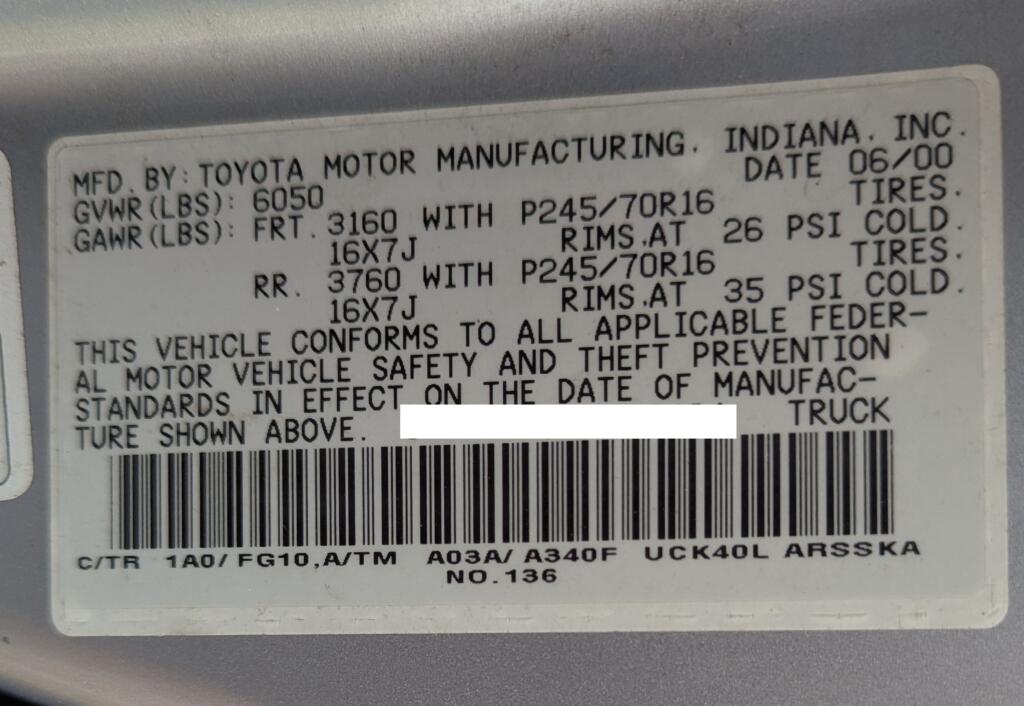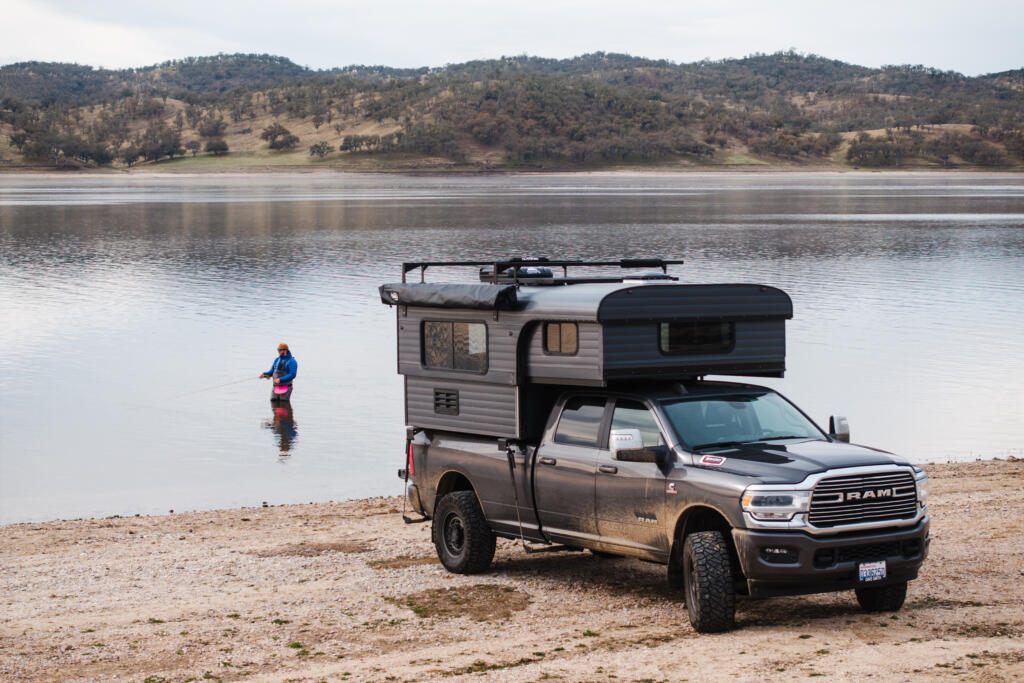How To Read a Payload Sticker
A simple guide to finding, reading, and using your truck’s payload sticker—plus an easy calculator to keep your setup safe.
| Section | What you’ll get |
|---|---|
| The right sticker | Where to look and what it’s called |
| The one number that matters | How to spot your true payload line |
| What changes payload | People, gear, tongue weight, dealer add-ons |
| Camper-specific labels | Extra stickers trucks and campers must have |
| Try the calculator | Quick math to sanity-check your setup |
The right sticker, right place
Open your driver’s door and check the door jamb or B‑pillar. Among the labels there, the key one for payload is the Tire and Loading Information label. NHTSA (under FMVSS 110) requires this label and even defines the wording. It’s often printed with black text on a yellow background for visibility.
Nearby, you’ll also find the Safety Compliance / Certification label, which lists GVWR (Gross Vehicle Weight Rating) and GAWR (Gross Axle Weight Ratings). While those are important for full-vehicle specs, they don’t give the direct “usable payload” you’ll use day-to-day.

The number that actually matters
On the Tire and Loading label, find the sentence:
The combined weight of occupants and cargo should never exceed XXX kg or XXX lbs.
That is your working payload limit. Because this is based on how your vehicle left the factory (tires, suspension, etc.), you don’t need to do GVWR minus curb weight yourself—this label does it for you.
If you want the formula: Payload = GVWR − curb weight, but in practice, trust the label for daily packing.
What really eats payload (and surprises people)
- Passengers: Every person in a seat counts.
- Gear you toss in: Tools, refrigerators or coolers, dogs, roof racks, bumpers, shells, off-road lights, etc. — all count.
- Tongue weight: If you tow, the trailer’s tongue load presses down on your truck bed and reduces your payload. Always subtract it
- Dealer add-ons / modifications: If a dealer or upfitter adds weight before first sale (e.g. heavy bumpers, winches, racks), they are required to place a “Load Carrying Capacity Reduced” addendum label within 25 mm (1 inch) of the original tire placard under FMVSS dealer modification rules. This label must use block letters at least 2.4 mm high and be clearly visible.
Camper‑specific labels and rules
- Truck camper loading guidance: Federal law (49 CFR § 575.103) requires pickup manufacturers to be clear about whether their trucks can safely carry a slide-in camper. If the truck is designed for camper use, the manufacturer must provide a label that lists the maximum cargo weight rating for the bed and shows the recommended center-of-gravity zone so owners know where the camper should sit for safe handling. If the truck isn’t considered suitable for a camper, the manufacturer is required to state that outright instead of providing camper-loading data.
- Camper’s label: The camper itself must carry a permanently affixed label (on an exterior rear surface, not roof or bumper) stating its maximum loaded weight (including standard equipment, water, propane, batteries, etc.) plus guidance on loading distribution. The owner’s manual (or data sheet) must also include instructions on how to determine the camper’s center of gravity (CG), match to the truck’s CG zone, and how to load for safe balance. Manufacturers must also certify that the camper conforms to applicable Federal motor vehicle safety standards.

Tips for Camper Loading:
- Distribute heavy gear low and forward (but keep it inside the recommended CG zone) to avoid overloading the rear axle or destabilizing steering.
- Drive to a weigh scale when fully loaded and measure front & rear axle weights separately. Neither axle should exceed its GAWR, and the sum should remain below GVWR.
- If you overload, it can degrade braking, handling, suspension, tires, and increase rollover risk.
Sanity check your setup
Think like a scale operator, not a spec sheet. Start with the payload from your Tire and Loading label. Then subtract:
- All occupants
- All gear (especially heavy, dense items)
- The camper’s “wet weight” (i.e. filled water tanks, propane, batteries)
- Any trailer tongue weight.
If you are close to the limit, back off by 10–15 % to give margin for braking, suspension travel, and tire margin. If you want full confidence, weigh at a CAT or public scale when fully loaded.
Payload Calculator

To wrap…
Bottom line: trust the Tire and Loading Information label’s payload line for everyday decisions. Watch for a “Load Carrying Capacity Reduced” addendum if accessories or modifications were made before sale. Respect the extra truck-camper guidance required by regulation for slide-in campers (center of gravity, cargo rating). And when in doubt—weigh it. Your brakes, bearings, suspension, and tires will thank you.
Primary sources used here: FMVSS 110 label rules and placement, NHTSA test procedures that define the yellow placard and tire load relationships (e.g. max tire load ≤ tire sidewall rating); federal rules for dealer modifications and addendum labeling under FMVSS 110 / upfitter rules; the Truck-Camper Loading regulation under 49 CFR § 575.103 and associated label and CG rules
